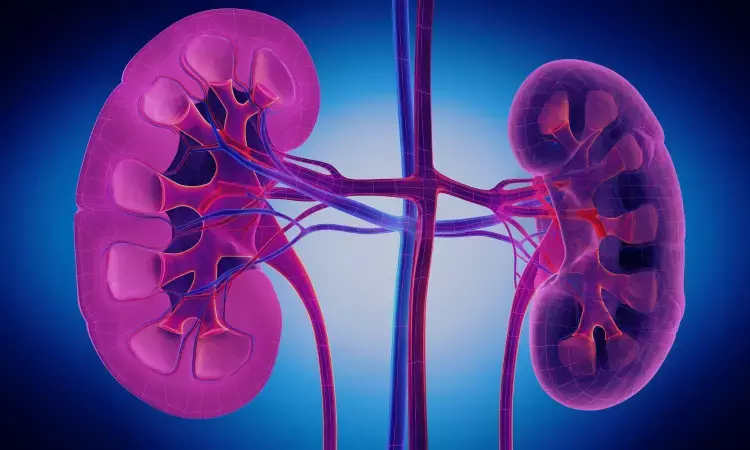- Home
- Medical news & Guidelines
- Anesthesiology
- Cardiology and CTVS
- Critical Care
- Dentistry
- Dermatology
- Diabetes and Endocrinology
- ENT
- Gastroenterology
- Medicine
- Nephrology
- Neurology
- Obstretics-Gynaecology
- Oncology
- Ophthalmology
- Orthopaedics
- Pediatrics-Neonatology
- Psychiatry
- Pulmonology
- Radiology
- Surgery
- Urology
- Laboratory Medicine
- Diet
- Nursing
- Paramedical
- Physiotherapy
- Health news
- Fact Check
- Bone Health Fact Check
- Brain Health Fact Check
- Cancer Related Fact Check
- Child Care Fact Check
- Dental and oral health fact check
- Diabetes and metabolic health fact check
- Diet and Nutrition Fact Check
- Eye and ENT Care Fact Check
- Fitness fact check
- Gut health fact check
- Heart health fact check
- Kidney health fact check
- Medical education fact check
- Men's health fact check
- Respiratory fact check
- Skin and hair care fact check
- Vaccine and Immunization fact check
- Women's health fact check
- AYUSH
- State News
- Andaman and Nicobar Islands
- Andhra Pradesh
- Arunachal Pradesh
- Assam
- Bihar
- Chandigarh
- Chattisgarh
- Dadra and Nagar Haveli
- Daman and Diu
- Delhi
- Goa
- Gujarat
- Haryana
- Himachal Pradesh
- Jammu & Kashmir
- Jharkhand
- Karnataka
- Kerala
- Ladakh
- Lakshadweep
- Madhya Pradesh
- Maharashtra
- Manipur
- Meghalaya
- Mizoram
- Nagaland
- Odisha
- Puducherry
- Punjab
- Rajasthan
- Sikkim
- Tamil Nadu
- Telangana
- Tripura
- Uttar Pradesh
- Uttrakhand
- West Bengal
- Medical Education
- Industry
Serum Galectin-3 Levels Linked To Increased Risk Of Diabetic Nephropathy

Diabetic nephropathy (DN) is a serious complication of diabetes that affects the kidneys. Identifying reliable predictive markers for DN is crucial for early detection and intervention. A recent meta-analysis published in BMC Nephrology aimed to investigate the association between serum galectin-3 (Gal-3) levels and the risk of DN in patients with diabetes.
The meta-analysis conducted by Guo Yong and team which included data from nine studies comprising a total of 3,137 patients, systematically examined the relationship between Gal-3 levels and DN risk. The researchers searched multiple databases, including PubMed, Embase, Cochrane Library, and Web of Science, for relevant studies published from the inception of each database up to March 2023.
● The findings revealed that patients with DN had significantly higher levels of serum Gal-3 compared to control patients.
● The standard mean difference (SMD) analysis showed that the SMD of serum Gal-3 was 1.10 ng/mL (95% CI: 0.63-1.57), indicating a higher Gal-3 level in the DN group.
● The presence of a higher level of heterogeneity was observed, with an I2 value of 96.1%.
● A sensitivity analysis was conducted by removing one study, and the results remained consistent.
● Patients with DN consistently exhibited higher serum Gal-3 levels compared to the control group (SMD: 1.03 ng/mL, 95% CI: 0.52-1.54, I2: 94.4%).
● Subgroup analysis based on the region revealed that in Asia, Europe, and Africa, the serum Gal-3 levels were significantly higher in DN patients compared to the control population (SMD: 0.73, 95% CI: 0.58-0.87 for Asian; SMD: 0.79, 95% CI: 0.48-1.10 for Europe; SMD: 3.15, 95% CI: 2.73-3.56 for Africa).
The results of this meta-analysis suggest that higher serum Gal-3 levels may be associated with an increased risk of developing DN in patients with diabetes. However, the exact underlying mechanisms and physiological basis of Gal-3 effects in DN require further investigation. Additional fundamental studies are needed to elucidate the role of Gal-3 in the pathogenesis of DN and its potential as a predictive marker.
Moreover, future research should focus on determining optimal cut-off values for Gal-3 and its diagnostic accuracy in predicting the development of DN. Understanding the significance of Gal-3 as a potential biomarker can help clinicians identify individuals at higher risk of DN and implement early interventions to prevent or manage this serious complication of diabetes.
It is important to note that this study had limitations, including its retrospective nature and the potential for heterogeneity among the included studies. Further prospective studies with larger sample sizes and standardized methodologies are necessary to validate these findings and provide more robust evidence regarding the role of serum Gal-3 in the pathogenesis and prediction of DN.
In summary, this meta-analysis highlights the potential predictive value of serum Gal-3 levels in assessing the risk of DN in patients with diabetes. The findings contribute to our understanding of the underlying mechanisms of DN and pave the way for future research aimed at improving risk stratification and personalized management strategies for patients at risk of developing this debilitating condition.
Reference:
Yong, G., Li, L., & Hu, S. (2023). Circulating Galectin-3 levels and Diabetic Nephropathy: a systematic review and meta-analysis. BMC Nephrology, 24(1), 163. https://doi.org/10.1186/s12882-023-03226-x.
Dr Kamal Kant Kohli-MBBS, DTCD- a chest specialist with more than 30 years of practice and a flair for writing clinical articles, Dr Kamal Kant Kohli joined Medical Dialogues as a Chief Editor of Medical News. Besides writing articles, as an editor, he proofreads and verifies all the medical content published on Medical Dialogues including those coming from journals, studies,medical conferences,guidelines etc. Email: drkohli@medicaldialogues.in. Contact no. 011-43720751


